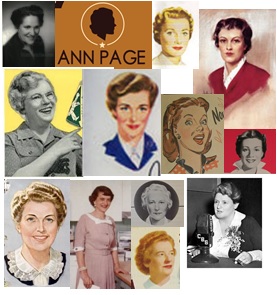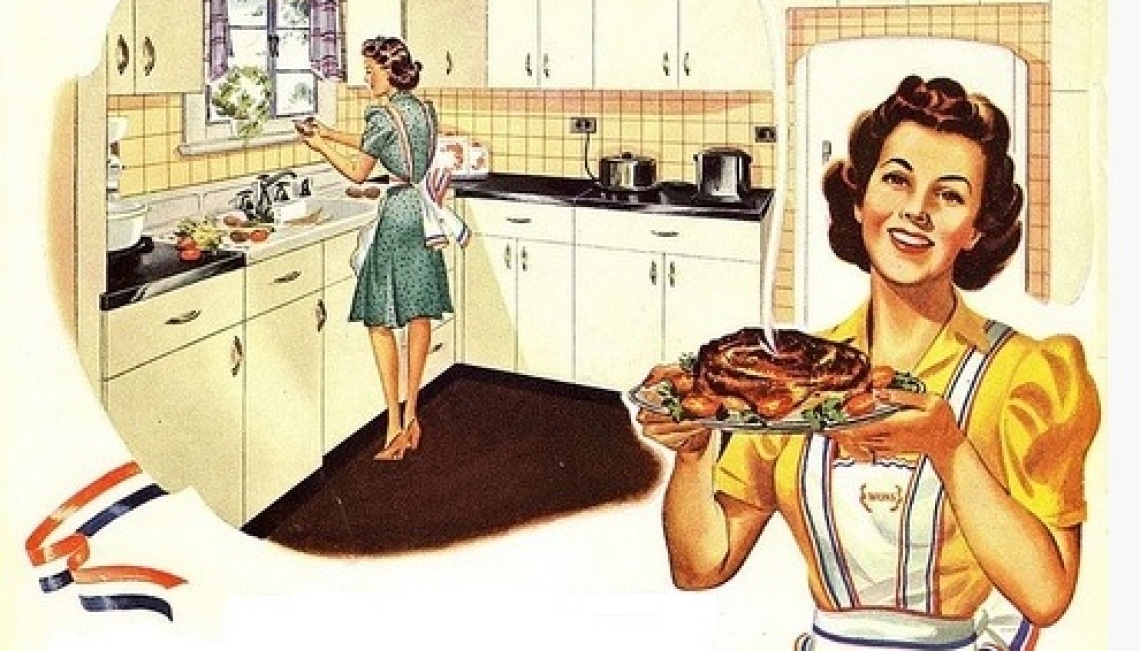I Get By With a Little Help From My Friends
I have some wonderful ladies helping me in my wartime kitchen project. Betty, Martha, Mary, Jane, Nancy, Anne, Martha M., Mary Lynn, Aunt Jenny, Mary Lee, Ann, Sue, Kay, Virginia, Mary Ellis, and Mary Margaret.

L to R: Nancy Haven (Western Beet Sugar), Ann Page (A&P Retail Stores), Martha Meade (Sperry Products), Betty Crocker (General Mills Gold Medal Flour), Aunt Jenny (Spry Shortening), Jane Ashley (Karo Syrup), Kay Kellogg (Kellogg Cereal), Virginia Roberts (Occident Flour), Martha Logan (Swift Meats), Mary Alden (Quaker Oats), Mary Ellis Ames (Pillsbury Flour), Mary Lee Taylor (PET Milk), and Mary Margaret McBride.
Advertisements from WWII make it possible for me to feel like these wonderful ladies are right here by my side baking bread, cakes, and pies. I know their faces from the labels on the boxes and cans of their products and I can hear their lovely voices on the archived radio shows.
These women were the famous names of food corporations during the war. In most cases, the women were fictional; made up corporate characters used to sell products to the doubting homemaker who needed the expert opinion of someone she could trust. “Experience has shown that a corporate personality makes friends for the company, gives it a greater degree of humanness, and frequently increases the readership and response to advertisements and recipes,” one industry executive wrote, “because Mrs. Consumer feels more confidence in recipes which have been tested and approved by another woman.” (Marie Sellers, “Product Insurance for the Homemaker,” in Food Marketing, ed. Paul Sayres McGraw-Hill Book Company, Inc., 1950)
One trade publication commented that “Ideally, the corporate character is a woman, between the ages of 32 and 40, attractive, but not competitively so, mature but youthful looking, competent yet warm, understanding but not sentimental, interested in the consumer but not involved with her.” (Katherine J. Parkin, “Food is Love: Advertising and Gender Roles in Modern America”)
Almost every food company had a corporate character with an “attractive, but not competitively so” face and a WASP-y name. Mary Alden worked for Quaker Enriched Flour, Nancy Haven for Western Beet Sugar, and Mary Lynn Woods for Fleishmann’s Yeast. (Susan Marks, Finding Betty Crocker: The Secret Life of America’s First Lady of Food).
“The extent of use of the corporate characters varied tremendously. Betty Crocker, whose name and face appeared on products, cookbooks, radio, and television, was one of the most-used characters. At the other end of the spectrum, some characters only appeared as a signature on correspondence to consumers.” (The Path to the Table: Cooking in Postwar American Suburbs by Timothy Miller)
Deceptive? Commercialism? Maybe, but I feel less “sold to” than modern day brand names like Martha Stewart, Rachel Ray, Giada De Laurentiis and Ree Drummond. How about the men? Would Bobby Flay, Gordon Ramsey, and Emeril been credible back in the WWII kitchen? Probably not. And, isn’t that interesting?
Another thought, why was Ann Pillsbury replaced by a Pillsbury Doughboy in 1965? How about Betty Crocker now being a red spoon? Have we altogether given up looking for advice from experts resembling humans and turned our confidence over to figments of imagination or logos to sway our buying preferences? Throughout the interviews I recorded leading up to this project, many people commented on the change of values and lost sense of community. I can’t help relating the movement away from people towards images being part of the swift change.

